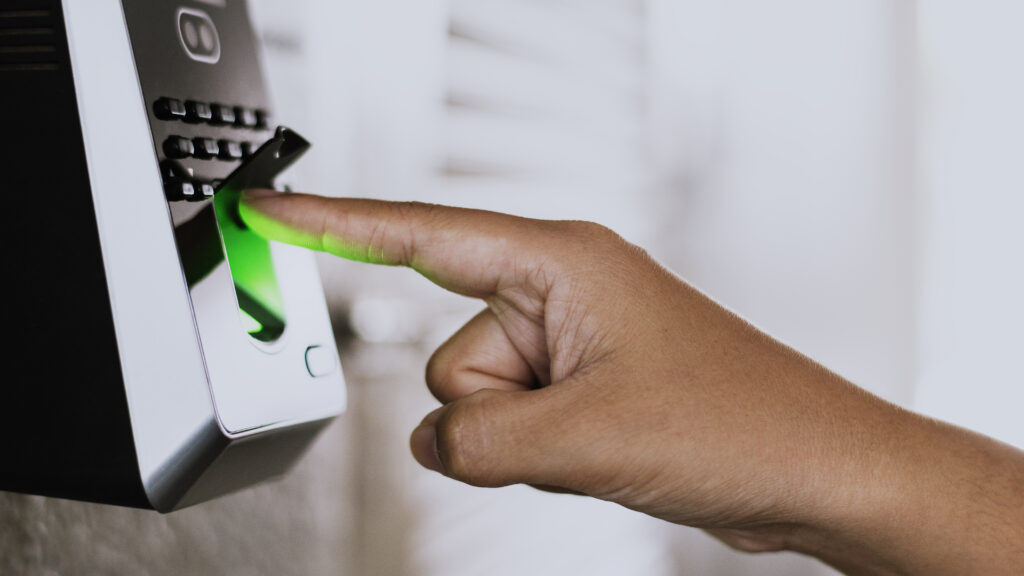
ENHANCING ACCESS CONTROL AND ATTENDANCE MANAGEMENT.
Biometric technology revolutionizes the way we verify identity, granting access, and managing attendance. By leveraging unique physical or behavioral traits, it ensures accuracy, security, and efficiency. Here are some key aspects:
Fingerprint Biometrics:
- Authentication: Fingerprint scanners verify individuals based on their unique ridge patterns.
- Access Control: In door access systems, fingerprints grant or deny entry, enhancing security.
- Attendance Management: Classroom systems automate attendance, reducing manual effort and improving accuracy.
Facial Recognition and Beyond:
- Advanced Biometrics: Facial recognition, iris scans, and voice recognition offer robust security.
- Hygienic Interaction: Contactless facial recognition promotes hygiene in public spaces.
RFID and QR Codes:
- RFID Cards: Combining RFID cards with biometrics ensures dual authentication.
- QR Code Attendance: Students scan QR codes for attendance, fostering accountability.
Convenience and Efficiency:
- Employee Experience: Biometric attendance devices eliminate the need for ID cards or PINs.
- Streamlined Processes: A simple scan marks attendance, saving time and reducing errors.
Biometric Technology: A Closer Look
Iris Recognition:
- The intricate patterns in the iris are unique to each individual.
- Iris recognition systems use near-infrared light to capture these patterns.
- Widely used in high-security environments like airports and government facilities.
Voice Biometrics:
- examines vocal qualities such tone, pitch, and speech patterns.
- Used for phone-based authentication and voice-controlled systems.
Palm Vein Scanning:
- Scans the vein patterns in the palm.
- Offers a contactless and secure method for access control.
Behavioral Biometrics:
- Analyzes behavioral traits like typing speed, mouse movements, and gait.
- Enhances security by identifying anomalies.
Retina Scanning:
- Examines the blood vessels in the retina.
- Rarely used due to its invasiveness.
Future Trends and Challenges
Multimodal Biometrics:
- Combining multiple biometric features (e.g., face and voice) for enhanced accuracy.
- Overcoming limitations of single-modal systems.
Privacy Concerns:
- Balancing security with privacy rights.
- Ensuring transparent data handling and consent.
Deep Learning and AI:
- Improving biometric algorithms using neural networks.
- Real-time processing and adaptability.
Liveness Detection:
- Preventing spoofing attacks (e.g., using photos or masks).
- Dynamic challenges during authentication.
Conclusion
Biometric technology is a game-changer, enhancing security, accuracy, and convenience. Whether it’s a fingerprint, face, or voice, these unique features empower efficient access control and attendance management. As we continue to innovate,biometrics will play an increasingly vital role in shaping our digital future. Infotel Communication Company is also a key player in the field of biometric technology, contributing to advancements in security systems and access control solutions.

